- Arkansas Growing Zones Explained - November 9, 2021
- North Carolina Growing Zones Explained - October 21, 2021
- Tennessee Growing Zones Explained - October 15, 2021
Many people associate peppers with heat, but there are over 50,000 different kinds of peppers, and they’re not all hot. In fact, there’s a Scoville heat unit scale that will tell you how hot a pepper is, so you can avoid what you don’t like or spice it up when the time is right.
While it’s nearly impossible to list every type of pepper there is, we’ve compiled a list of some of the most notable peppers, peppers that are easy to grow at home, and popular peppers that a lot of people like.
The Scoville Heat Unit Scale
Thankfully there’s a science to grading peppers and their heat. The Scoville heat units (SHU) range from 0 to 16 million, but most commercially available peppers don’t reach 300,000 units. The units are measured by the amount of capsaicin in the pepper where 0 is none and 16 million is pure capsaicin.
In 1912, American pharmacist Wilbur Scoville developed a test to estimate the SHU in a pepper. It’s a subjective assessment that measures the capsaicinoid content of pepper to indicate pungency.
Called the Scoville organoleptic test, alcohol is used to dissolve the weight of dried pepper. This process extracts the capsaicinoids, which are then diluted in a solution of sugar water. The resulting dilution is then given to five trained human tasters until at least three of them can no longer detect the heat.
While the test is imperfect due to human subjectivity and sensory fatigue over time, it’s still a very good estimate of how hot pepper may seem to most people.
Only recently have alternative methods for measuring capsaicinoid content in peppers been developed. As recently as 2011, the high-performance liquid chromatography method was recognized as superior to the Scovill organoleptic test.
Pepper Nutrition
Nutrition in a pepper varies depending on the type, but peppers are generally a great source of vitamin C and A. Capsaicin has been used medically for centuries as well. While peppers are generally void of fat and make great healthy additions to meals, they are associated with inflammation. People with autoimmune disorders should avoid them.
Using Peppers for Cooking
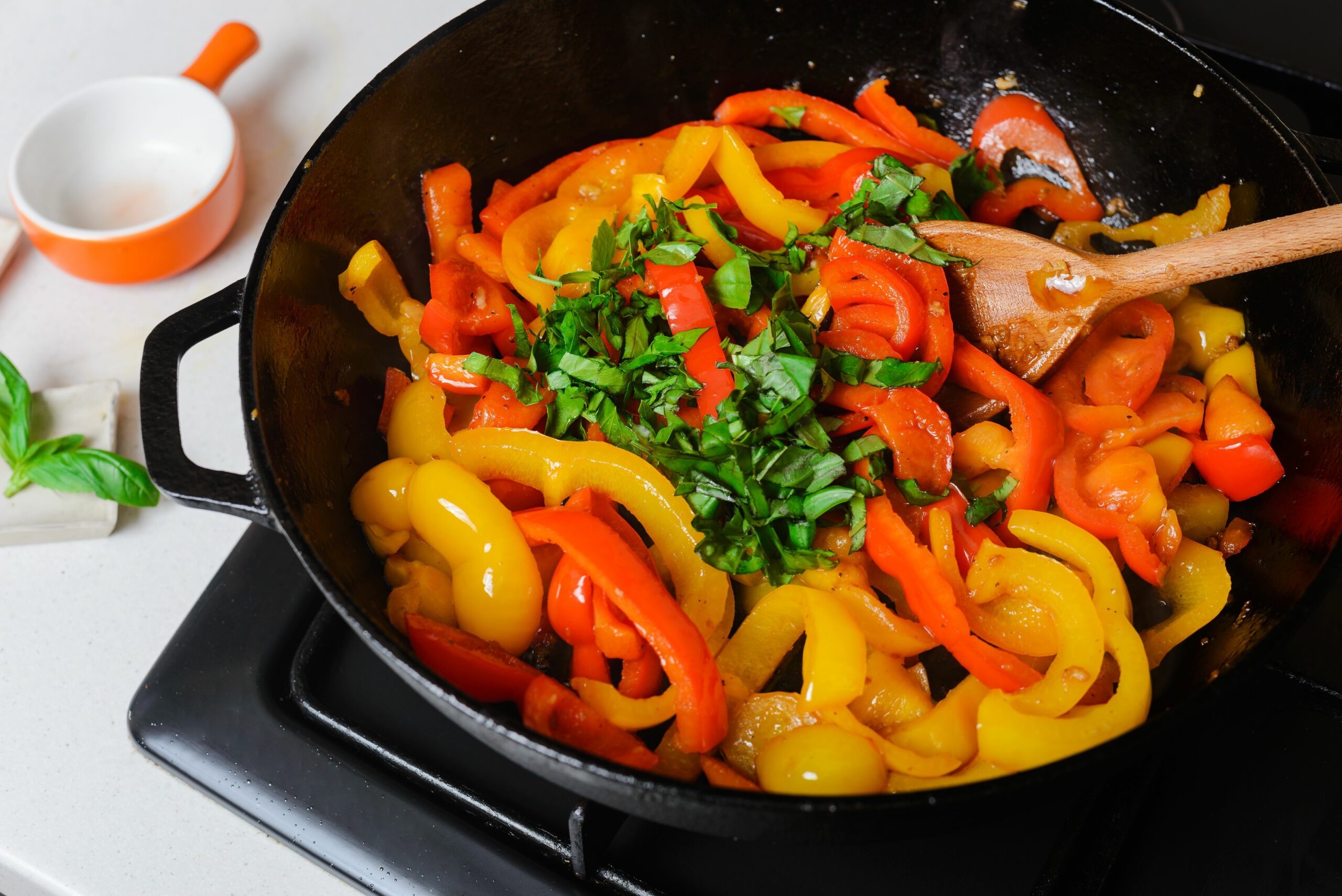
Peppers can be used in sauces, condiments, spices, and powders. These ingredients can then be added to jelly, soup, dip, stew, salsa, chili, and a whole lot more. Even on their own, peppers are deliciously stuffed, charred, or breaded and fried.
You can slice them or dice them and add them to many different types of dishes, with or without cooking them first. They’re even wonderful plain or dipped in a vegetable dip, even though they’re technically a fruit.
Types of Peppers
While most peppers are fruits, they don’t have the same sweet, juicy quality you have come to expect from a berry. Rather, they prefer to tempt our taste buds and stretch the limits of our heat tolerance. Most peppers thrive in the summer sun where they can enjoy the hot, dry weather. They live in heat, produce heat, and bring the heat in the kitchen. However, many pepper plants will still thrive well into the fall.
Bell peppers

Bell peppers are the sweetest, most mild of the peppers. You can eat them raw with hummus or another dip, cook them into your stir fry or tacos, or stuff them with cheese and meat. They come in green, red, yellow, orange, and sometimes purple. One of the ingredients in paprika is bell pepper.
Bell peppers are identified by their distinctive bell shape, and each color has its own distinct taste. Green is the least ripe and sweet. As the pepper ripens, it turns from green to red, then yellow, and last orange. Each change in color produces a more sweet flavor.
Purple bell peppers are similar to green. As they ripen they turn yellow and orange. All bell peppers measure 0 SHU, so you don’t have to fear when eating one of these. They’re also easy to grow in your garden at home. They have a rather long growing period of 90-100 days, so plant them early if you live in a cold climate and start your seeds indoors.
Bell pepper plants are very unique, because the fruit of the plant is ready to eat as soon as it ripens, but can be left on the plant for as long as desired. It’s fun to experiment with different types of bell peppers and how long you like to keep them growing before eating them.
Another interesting thing to note is that in tropical climates, the bell pepper grows as a perennial, but in colder climates, it won’t survive the winter and must be planted annually unless kept indoors. There are also mini bell peppers that are similar in color and flavor, but much smaller.
Banana peppers

Also easy to grow at home, banana peppers look like a banana. They’re typically yellow or light green and 4-6 inches long. They can ripen to orange or red over time. These peppers have almost no heat, but they’re a bit tangy. Heat units range from 0-500 and these peppers are great on deli sandwiches, in salads, and on pizza.
Pepperoncini is often confused with banana pepper because they look and taste almost identical. Pepperoncini are best when picked at a green color, but they will turn red if left on the vine. These two types of peppers are interchangeable, but pepperoncinis are just a bit tangier with 100-500 SHU.
Much like the bell pepper, these plants should be started indoors about a month before you want to put them outdoors, but they grow best from a transplant unless you live in the warmest zones. Banana pepper plants will grow heartily on their own, but some extra TLC will produce higher yields.
You can harvest individual fruits as you want them, but at the end of the season, the entire plant must be removed from the ground. It grows annually rather than perennially.
Carmen peppers
These peppers look like bull horns and are about 6 inches long. They’re distinct because they’re very wide, at almost 2 inches each. They’re best when they’re a deep red color, and they are very thick-walled, giving them a meaty texture.
It’s a sweet Italian pepper that doesn’t have much heat, and they’re excellent roasted.
Carmen peppers are widely adaptable over a large range of temperatures. They will flower and produce fruit, even in cooler climates. However, just like all peppers, they thrive in full sun. These plants grow to be about 28-30 inches tall. These peppers are reliable, easy to grow, and mature in about 75 days.
Anaheim peppers
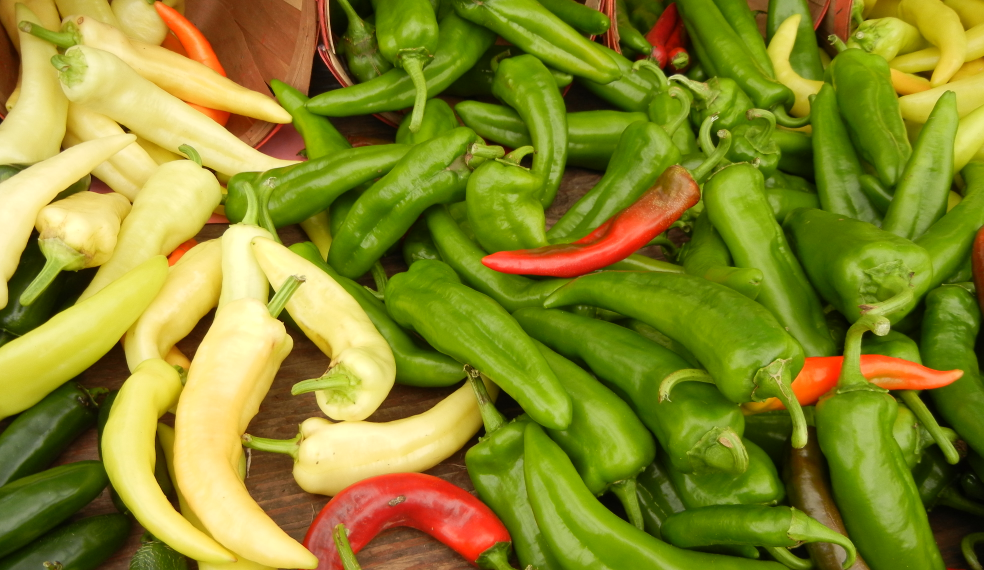
This pepper goes by a few other names including California green chili, chili Verde, Colorado red chili, and New Mexican chili. It’s a long, green pepper that’s relatively mild, with 500-2500 SHU. It’s a versatile pepper that’s popular in salsa as well as American Southwest dishes.
Anaheim peppers are about 6-10 inches long and ripen from green to red, but can be eaten at either color. They are milder than a jalapeno and are one of the most common peppers. They’re used for roasting and in making chile Rellenos.
Another easy pepper to grow, the Anaheim is a perennial plant that will flower and produce fruit for three years or more. It’s generally healthy and low maintenance, growing better in a sandy loom than in traditional soil. It thrives in full sun, like most peppers, and enjoys moist soil.
Poblano peppers
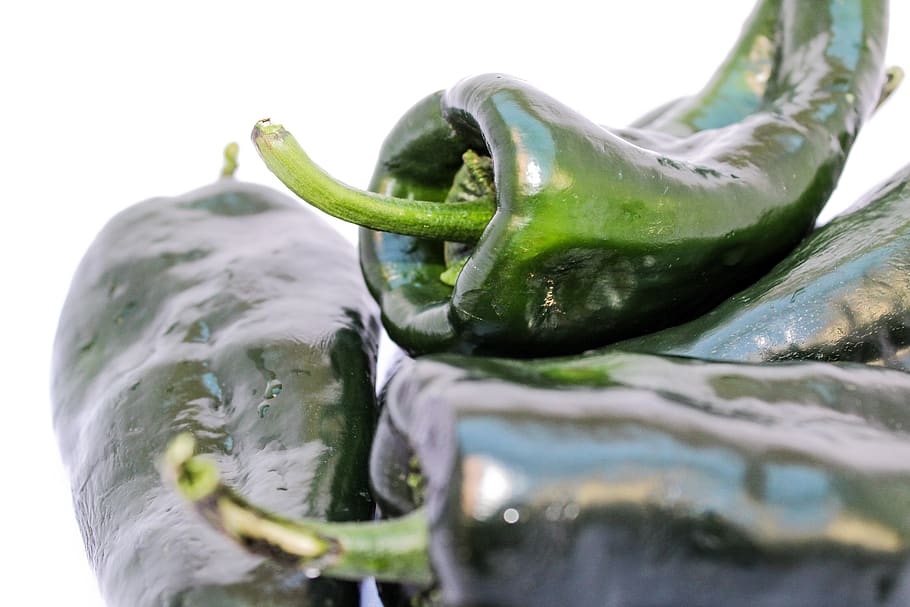
Poblano peppers are comparable to Anaheim peppers, but they’re smaller. They’re heart-shaped peppers with thick walls and grow to be about 3-6 inches long. They appear as a dark green color. They’re mild and taste earthy. They’re best roasted and peeled. When they’re dried, they’re called ancho chilis. SHU ranges from 1000-2000.
Poblano peppers may prove a bit more difficult to cultivate than some other peppers. They’re temperamental, thrive in full sun and heat, and don’t like colder temperatures. It’s important to start seeds indoors, keeping them warm and well-lit. They shouldn’t be planted outside until they reach 5-6 inches in height and the overnight lows are at least 65-70 degrees Fahrenheit.
Hatch chili peppers
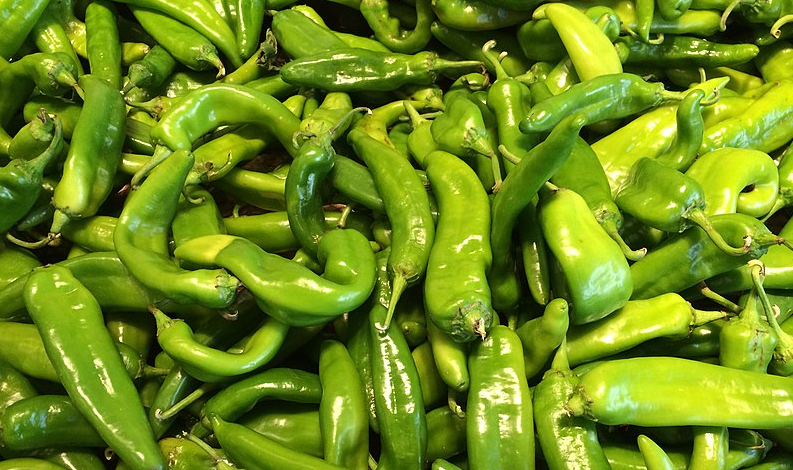
These peppers are similar to Anaheim peppers. They have an elongated shape and are 6-10 inches long. The term hatch chili refers to the type of pepper grown in Hatch, New Mexico. They are popular throughout the Southwest. The flavor is earthy and heat varies depending on how ripe they are. They start green and can be picked while still mild. As they turn red, they get hotter, much like a jalapeno. SHU ranges from 1000-8000.
The Hatch chili pepper likes a long, warm growing season, which is why it is native to the Southwest. You can grow it anywhere if you can replicate the environment, but many people say their distinct flavor comes from the unique growing conditions found in New Mexico.
Germinating seeds like to be kept at a moist 90 degrees, but seedlings hate wet feet, so overwatering is possible. Let the soil dry out between waterings. These plants will not tolerate the cold, so do not put them outside until all risk of frost has passed.
Jalapeno peppers
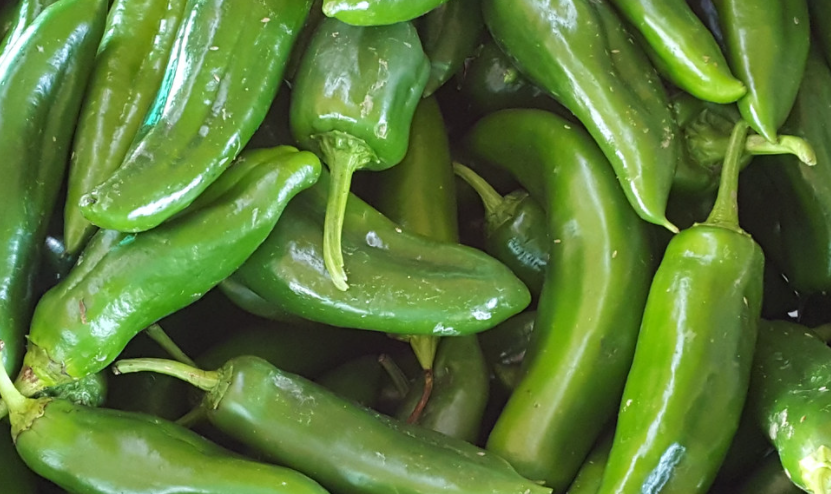
This medium-sized pepper is thick-walled and only about 2-3 inches long, although some can grow as long as 6 inches. They’re commonly harvested while still green because this is when they’re hottest, but they can be left on the vine until they turn red. Red jalapenos are milder and sweeter.
These peppers are hot, but not so hot they’re uncomfortable for most people. SHU ranges from 2500-8000.
Jalapenos are frequently used in salsa, as toppings on burgers and tacos, or in jalapeno jellies. Another interesting bit of trivia – when dried, a jalapeno is called a chipotle. The great thing about jalapenos is that they’re probably the easiest pepper to grow at home because they can be grown indoors year-round.
The jalapeno plant loves full sun but requires a temperature between 65 and 80 degrees to germinate. They also won’t produce an abundance of fruit if they get too hot, which is anything above 90 degrees. This is why they do so well indoors, as long as you give them proper nutrition and sunlight.
Fresno peppers
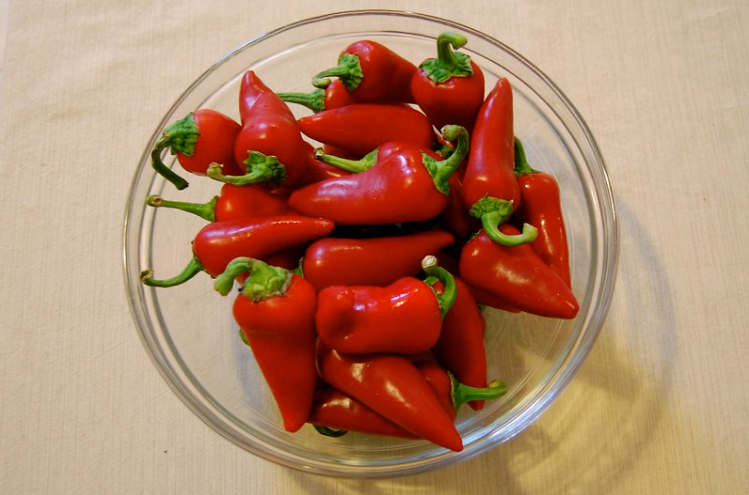
Fresno peppers are the first on our list that really brings the heat. With SHU approaching 10,000, these are both spicy and sweet. They’re firm and glossy with the flesh of medium thickness. They’re 2-3 inches long and slightly curved. They start green and when they mature, they turn into a deep red. These are excellent fire-roasted or used in Latin stews and soups.
These plants love long, warm (or hot), summer days and cool nights. They produce more fruit in dry climates and they are disease resistant, but they’re very cold sensitive.
Serrano peppers
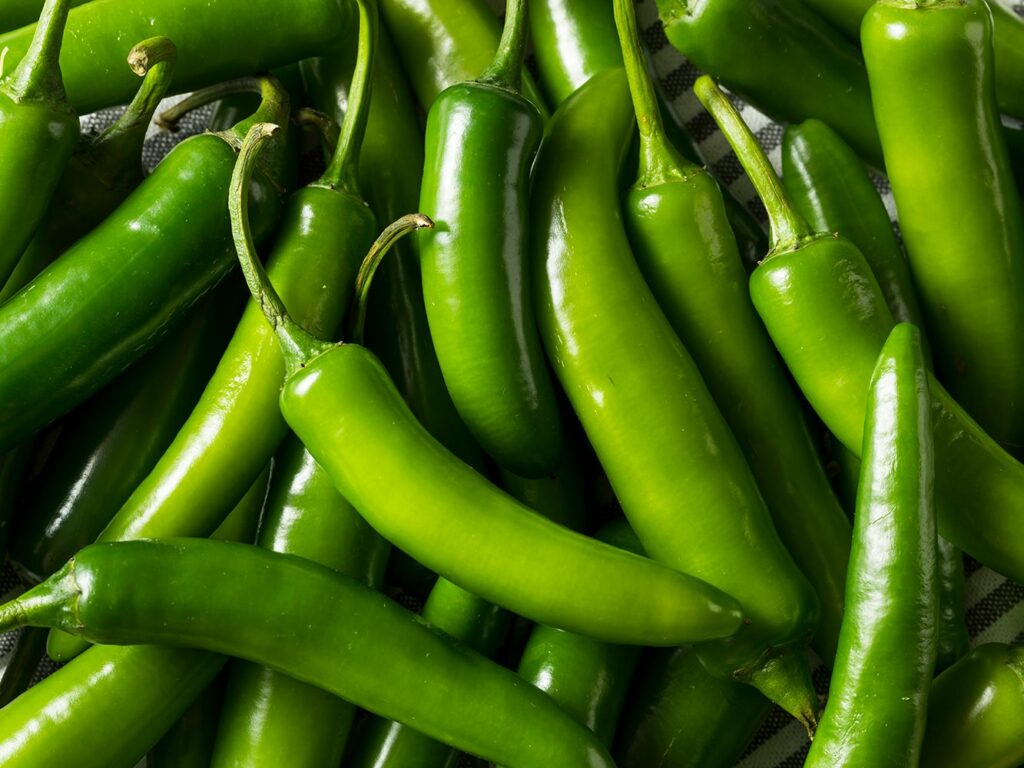
This pepper has a fresh flavor and a spicy kick, with SHU between 10,000 and 23,000. They’re 2-4 inches long and start green. They change from orange and then to red as they ripen. They add a spicy kick to salsa and are delicious fresh or roasted.
They’re easy to grow and they’re very productive. They thrive in warm temperatures, making them ideal for many different climates. They need well-drained soil but adapt well to humid environments. These peppers feed voraciously, so fertilizing them once a month is a must.
Thai chili peppers
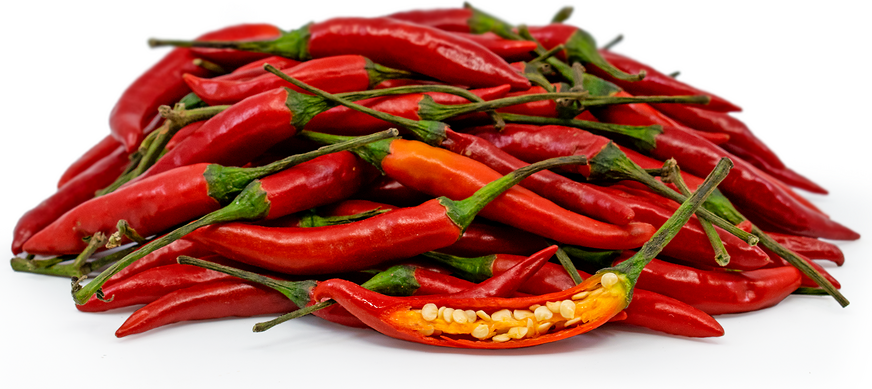
These small, thin-walled peppers are 1-2 inches long. They are harvested with dark red, and you commonly see them in Thai dishes. They’re very hot, which is what gives Thai its signature heat. SHU ranges from 50,000-100,000.
These peppers love a long hot growing season, so starting them inside is a must if you live in a colder climate. Seeds need to be kept moist between 80-85 degrees and should be placed in a south or southwest window. Plant them outdoors after all frost and in full sun.
Habanero peppers
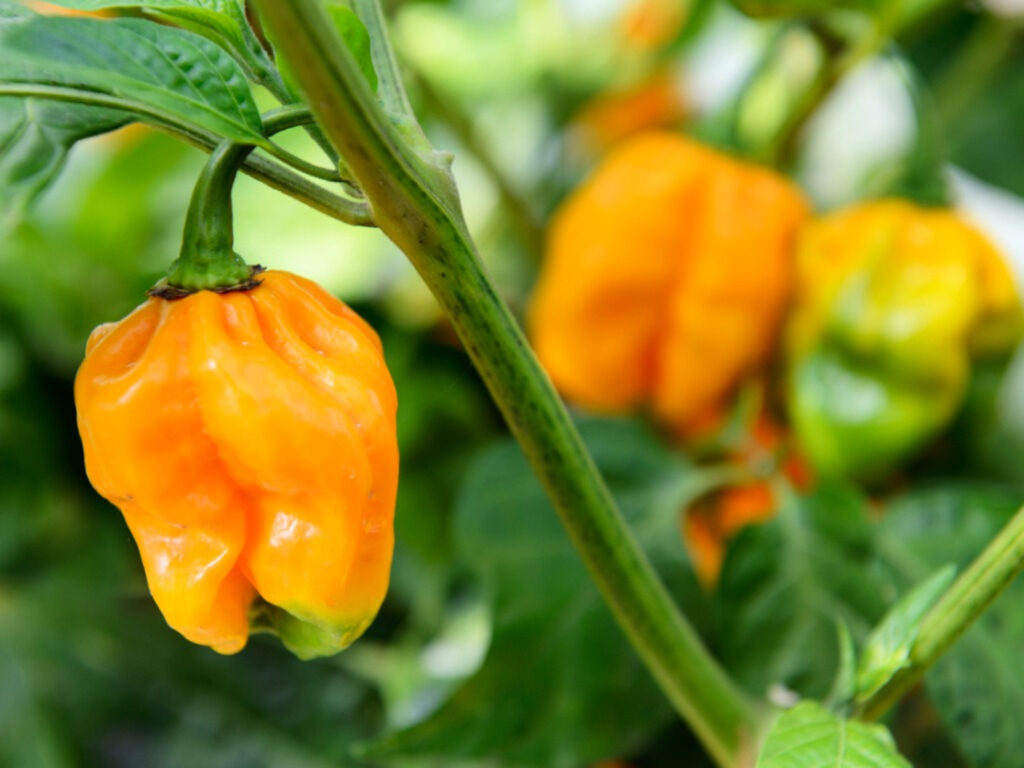
These thin-walled, waxy peppers are about 2 inches long and 1-2 inches wide. They look like fat little pumpkins. Their color ranges from yellow to orange, but they will turn red if left on the vine for long enough. They offer a good mix of flavor and heat with a little bit of citrus. If you want to spice things up, these peppers are 200,000-300,000 SHU. They’re one of the hottest commercially available peppers.
They’re excellent candidates for salsas and spices, but a lot of people can’t handle eating them plain. Many people in Mexico, on the Yucatan Peninsula, and in the Caribbean use them to make hot sauce. Habanero plants love a long hot growing season, but can actually be planted outdoors two weeks prior to the last frost. They need 120 growing days, they love warm soil, and they should be well-drained.
Habanero plants look much like the habanero themselves. They’re only slightly taller than they are wide, they’re bushy, and the leaves are simple with a green glossy appearance.
Cayenne peppers
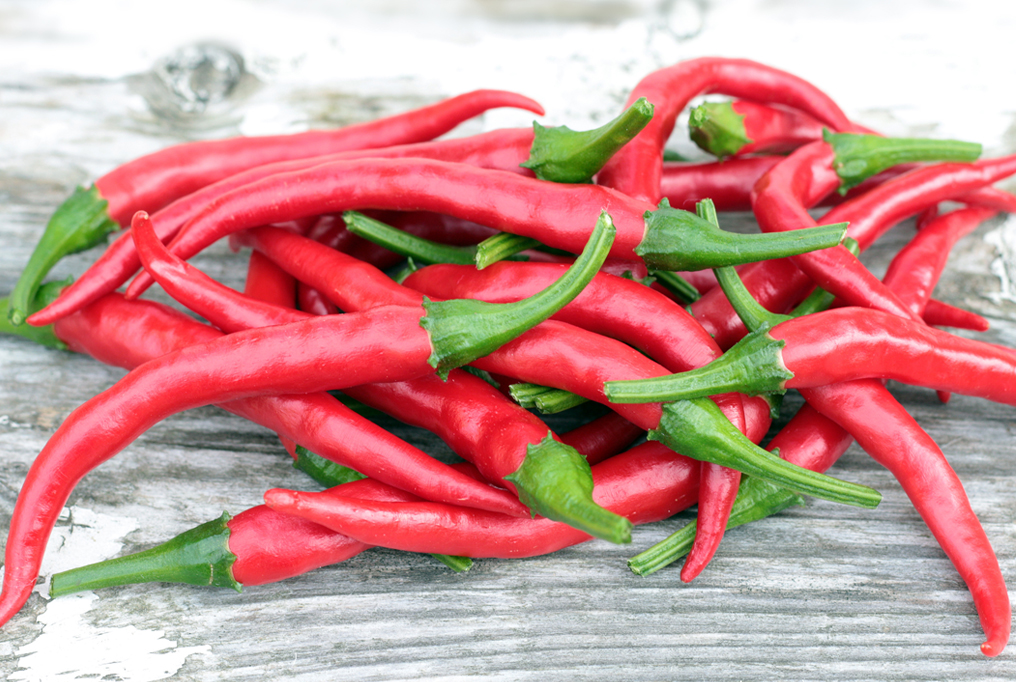
They’re not the hottest by any means, but cayenne pepper can still light your mouth on fire if you eat it. It also goes by the names finger chile, Ginnie pepper, and bird pepper. It’s a slender pepper that tapers at the end and is easily recognizable dried and ground.
Cayenne pepper is a common seasoning in almost every kitchen and it’s featured in Tex-Mex dishes. They can be red or gold and have a SHU of 35,000-50,000.
Cayenne peppers are very delicate. While they can be directly sowed outdoors 10-14 days before the last frost, they require a bit of heat and are resistant to fluctuations in temperature. They will react badly if it’s too hot or too cold. Temperatures should be at least 60 degrees. They grow as a perennial in tropical regions but will need to be planted annually in other zones.
Scotch Bonnet peppers
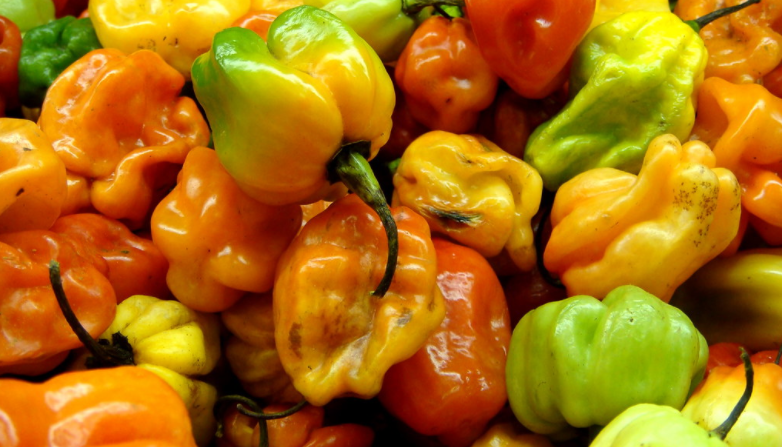
The Scotch Bonnet is also known as the ball of fire, Caribbean red, cachucha, or Bonney pepper. They’re frequently compared to habaneros, and they’re pretty spicy, with SHU of 80,000-400,000. It’s called the Scotch Bonnet because it looks like the Scottish caps men wear in Scotland. It’s most commonly found in the Caribbean and it’s used for island dishes like jerk chicken.
Scotch Bonnet peppers can be finicky. It’s best to start these indoors 6-8 weeks prior to the last frost. Introduce them to outdoor temperatures and conditions gradually, and then put them in the ground when the soil reaches 60 degrees. They need to be uniformly moist, so having a drip irrigation system is ideal for these.
Bhut Jolokia peppers
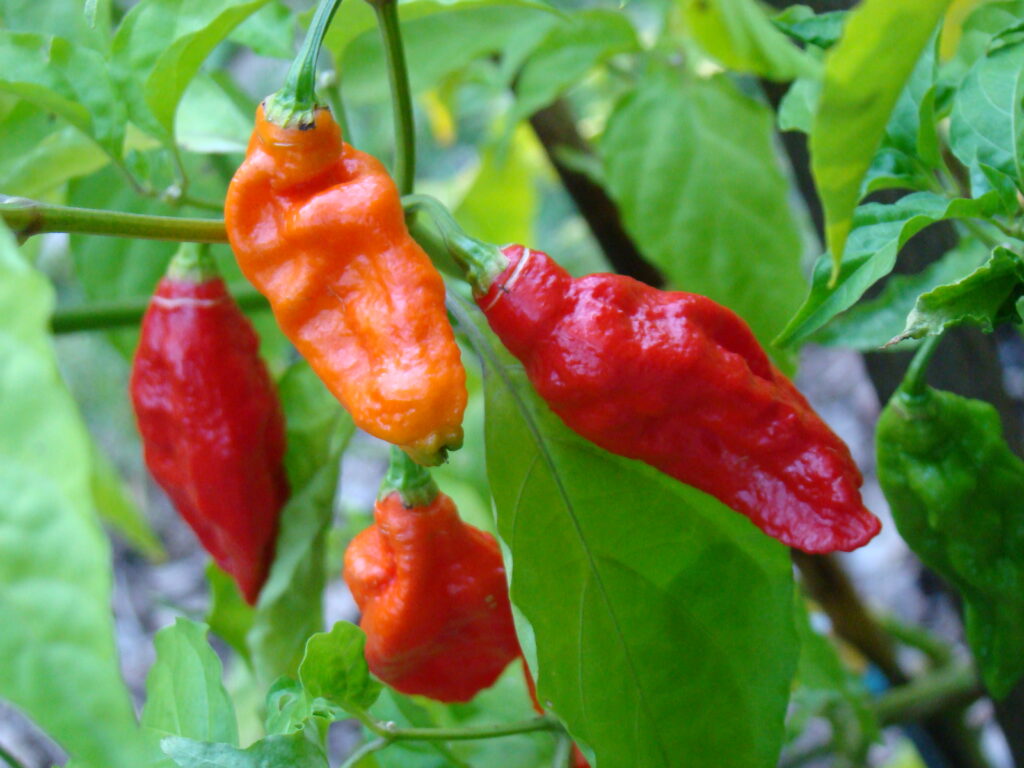
The common name for this pepper is the ghost pepper. It’s the former Guinness Book of World Records holder for World’s Hottest Pepper. This pepper is 2-3 inches long and ranges from red to orange. It can also be purple or brown. The thin skin gets dented and tears easily.
However, the pepper isn’t always hot. At first, it tricks you into thinking it will be very sweet. It has a nice chili flavor followed by an intense heat that increases for the following 15 minutes. While it’s an excellent candidate for super spicy salsa, you should use caution when handling it. SHU ranges from 850,000-1,463,700.
Growing a ghost pepper plant may prove difficult unless you have a greenhouse where you can replicate their native Indian environment. Intense heat and humidity is where they thrive, so if you do have a shorter growing season and cooler temperatures, you can try bringing them indoors at night. However, they’re also sensitive to these fluctuations in temperature, and may not produce fruit at all.
Super hot peppers
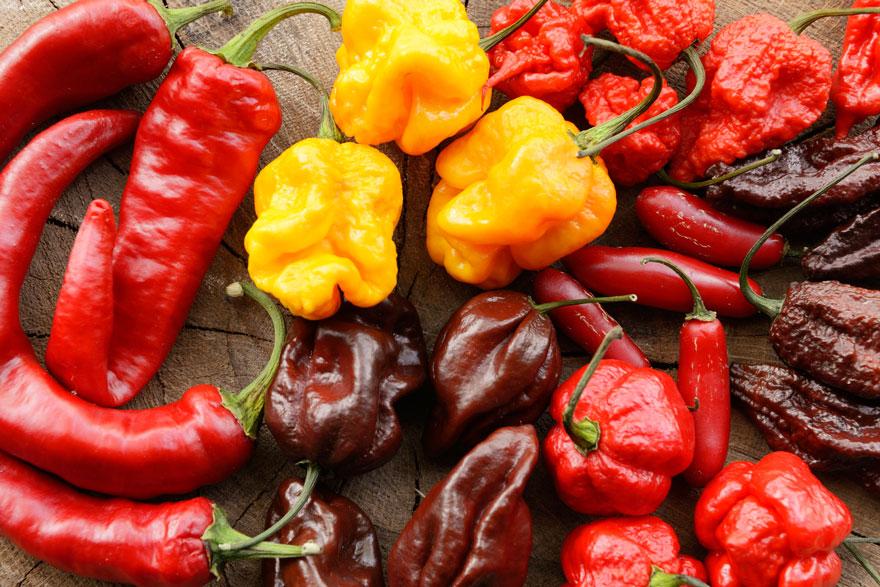
Believe it or not, a ghost pepper isn’t the hottest. In fact, there are quite a few peppers that are even hotter. They’re commonly used in pepper-eating contests. The Komodo Dragon pepper is comparable to the ghost pepper at 1,400,000 SHU.
Carolina Reaper peppers are even hotter, with a SHU ranging from 1,000,000 to 2,00,000. It’s a lot like eating pepper spray. For most people, it burns and it’s tolerable, even in small amounts.
Dragon’s Breath peppers are about as hot as they come. SHU is 2,480,000, but there’s no official lab test to back this up because no one wants to eat it. This pepper is tiny, but it packs a punch, and they’re not commercially available anywhere, nor are they recommended for eating.
FAQs
Answer: There are nearly 50,000 different kinds of peppers of the capsicum species worldwide. The USDA recognizes about 6200 of them.
Answer: Identifying a pepper involves looking at the seeds. Dark pepper seeds indicate purple petals while tan or yellow seeds mean the pepper will be mild.
Answer: The jalapeno is the easiest pepper to grow, and it’s also the fastest-growing. It’s a staple in a lot of gardens and kitchens. They reach maturity in just 75 days unless you want to keep them on the vine until they turn red. They’re even great for indoor gardens and climates with shorter, cooler growing seasons.
Answer: Sweet bell peppers and cherry peppers are very mild and feature the lowest rating on the Scoville scale. There are also peppers like Serrano and cayenne that are relatively mild, but slightly hotter.
Answer: Peppers are self-pollinating and typically won’t cross, but all peppers belong to the same species of plant, which means cross-pollination is possible. If you plant a sweet pepper plant next to a hot pepper plant, and they do mix, you’ll be in for quite the surprise.
Final Thoughts
If you love peppers and you’re adventurous, there are a few here you might want to try. Some of my personal favorites are the jalapeno, the Hatch chili, and the habanero. I even like some ghost pepper salsa from time to time.
However, bell peppers are sweet and enjoyable, and for those who want to stay away from the heat, these are a safe bet plain or in any of your favorite dishes. Banana peppers are also great options for pizza and salad.

